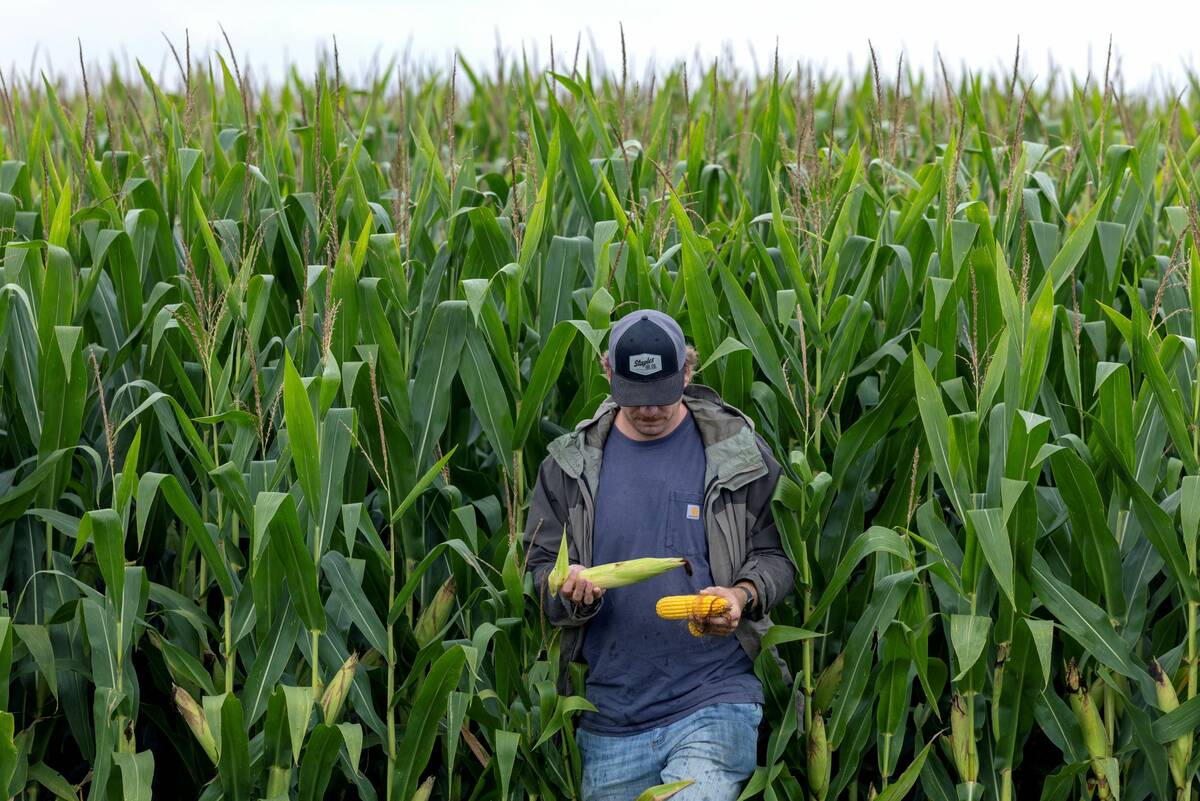Oct. 8 — All markets came out of the gates with positive momentum and have been able to hang onto it for the most part today. Financial indexes and energy markets showed steady gains as the U.S. dollar fell half a cent today, which in turn prompted the Canadian dollar to rise over a full cent to close at US95.1 cents.
Grains started the day strong and finished surprisingly strong considering the impending U.S. Department of Agriculture report due out Friday. Poor weather forecasts for the U.S. and Western Canada have lent some short-term support to the grains as harvest efforts are delayed.
Read Also

The U.S. corn crop could be the biggest ever. That’s terrible news for America’s farmers.
The USDA predicts a record corn crop for U.S. farmers, who question the agency’s accuracy amidst high debt and low crop prices.
The Dow Jones December quote closed up 52 points at 9,725 today.
Crude oil closed up $2.12 at US$71.69 a barrel.
Corn closed up 3-4.2 cents a bushel today, while beans closed up 18-24 cents a bushel.
Wheat futures closed up nine to 12.6 cents a bushel today. Minneapolis December wheat closed up 10.6 cents a bushel for the day.
Canola closed up $3.40-$4.10 per tonne today.
November Western barley futures closed up 40 cents at $150.40 per tonne.
Decision time
This is the time of year when the hardest part of farming comes into play: business planning and management decision time.
As the harvest in North America and other parts of the world comes to a close over the next couple of months and world production numbers become for real, it makes me think it’s time to seriously look at what your seeding intentions for the next year or two are going to be.
As much as you may want to radically change your seeding intentions based on current commodity prices, crop rotations, disease and resistance issues pretty much dictate what you will grow the next year or two, so based on that you will have a pretty good idea of your starting acres.
The reason I bring this up now is that if you know what you will grow and if you use current forward grain prices x an average yield to determine your potential gross dollars per acre, then you can start to calculate back what you can afford to spend on inputs.
What I’m getting at is that you need to keep a close eye on input costs such as fertilizer and fuel, and if prices are at levels that allow you to maintain a profit per acre based on the above calculations, should you be locking in those costs and selling forward contracts to ensure at you are at least maintaining a small margin of profit for some of your production?
With world stocks rebuilding like they have the past two years we could be in for a two-year cycle of flat prices before we see a real change in acres seeded or crops grown to help rebalance world inventories and bring prices back up. If this plays out this way, you may face some very tight times ahead and breaking even on a per-acre basis may be a goal that could be hard to achieve. Knowing your costs will be critical going forward and when you have the ability to lock in profits, it’s going to be key that you act.
Locking in just costs or locking in just the price for your grain does not guarantee you a profit at the end of the day. Doing both, though, helps to balance the risk a bit more. It doesn’t 100-per-cent guarantee a profit as you are still at risk of yield adversity that could throw the calculation out. The question becomes this: are you willing to let it ride and do nothing, leaving everything to chance, or are you willing to secure inputs and price grains on some acres to reduce your overall market exposure in today’s world market environment?
Food for thought.
That’s all for today. — Brian
— Brian Wittal has spent over 27 years in the grain industry, including as an elevator manager and producer services representative for Alberta Wheat Pool, a regional sales manager for AgPro Grain and farm business representative for the Canadian Wheat Board, where he helped design some of the new pricing programs. He also operates his own company providing marketing and risk management advice for Prairie grain producers. Brian’s daily commentaries focus on how domestic and world market conditions affect you directly as grain producers.
Brian welcomes feedback and information on market conditions in your area, such as current offering prices, basis levels, trucking premiums and special crops contracts. Contact Brian today.














